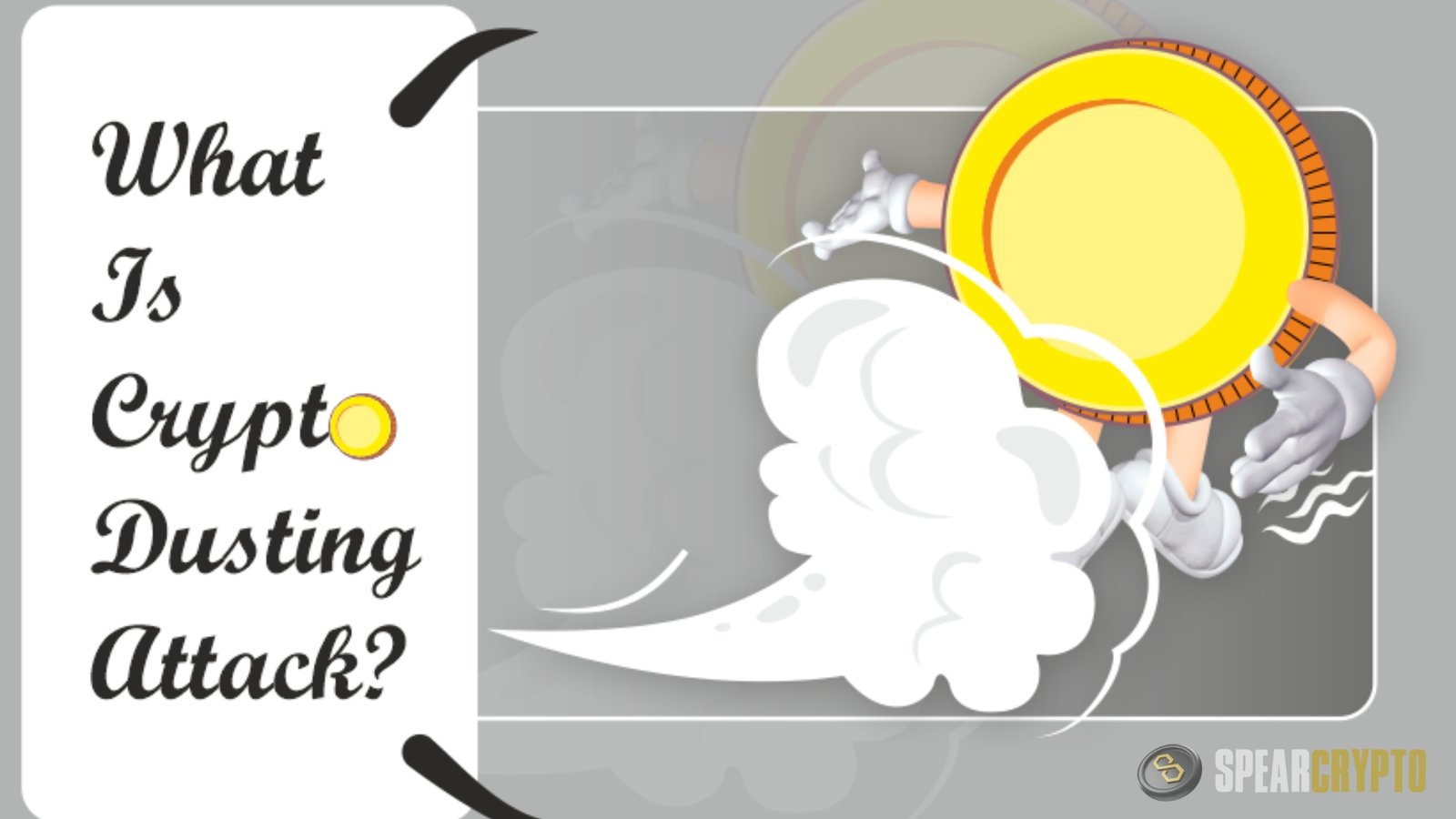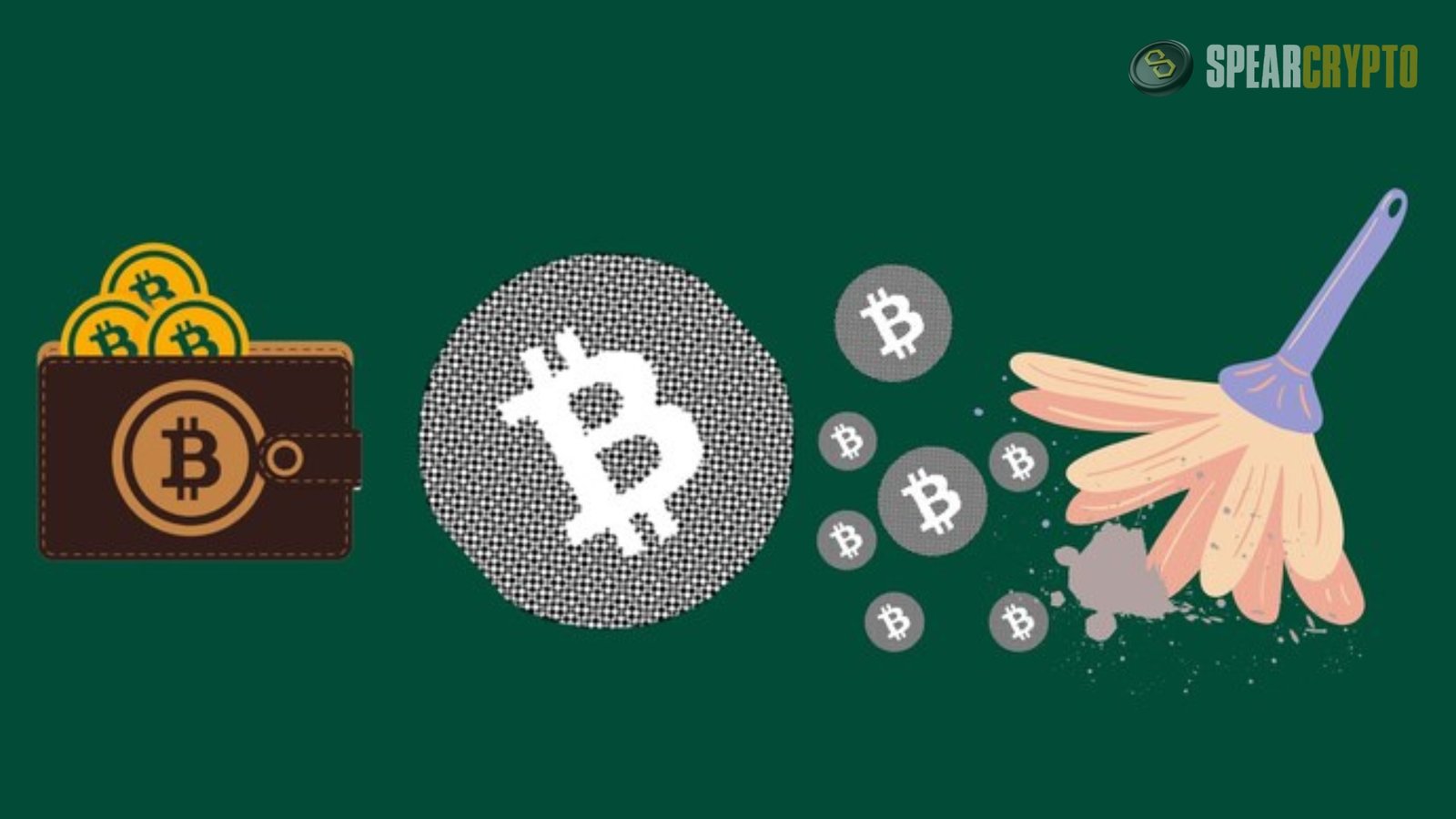
Crypto Dusting Attacks. Whether for good or evil, crypto dust is just bits of Bitcoin transferred to several wallet addresses. As a rule of thumb, dust is the quantity of cryptocurrency that is less than or equal to a transaction fee. For instance, the Bitcoin blockchain software, Bitcoin Core, has set a dust limit of about 546 satoshis (0.00000546 BTC), the smallest unit of Bitcoin (BTC). Nodes within the wallets that implement this restriction may refuse transactions with a value of 546 satoshis or less.
Additionally, dust might be defined as the tiny quantity of bitcoin that remains after a trade due to rounding mistakes or transaction costs; this amount can build up over time. You can turn that little amount into the exchange’s native token, but it can’t be traded.
It shouldn’t be a big deal since crypto dust is mostly used for good rather than evil. One strategy is to contact wallet holders via dusting as an alternative to the more conventional mailshots. In dust transactions, advertising messages can be included, so dusting is utilized instead of mailshots. Although dust attacks are uncommon, crypto users should be prepared for them by understanding what they are and how to prevent them.
What is a Crypto Dusting Attack?
When bad actors disperse small quantities of cryptocurrency, or “dust,” to various wallet addresses throughout blockchain networks, they commit a dusting attack. A cryptocurrency address is not associated with a specific person or entity due to the pseudonymous nature of blockchain technology. On the other hand, the blockchain ledger is open and traceable so that everyone can see all the transactions. If you know an address’s history, you can even track their behavior.
Intruders who send “dust” to Bitcoin wallets do so to monitor their owners’ financial transactions and perhaps compromise their privacy. Although dusting won’t allow the attacker to take money, they want to link the victim’s address to other addresses in the hopes of identifying them through off-chain hacking.
All public blockchains, including Bitcoin, Dogecoin, and Litecoin, are vulnerable to crypto dusting attacks. These attacks try to connect compromised addresses and wallets to the personal data of associated businesses or people to profit from intricate phishing scams, cyber extortion threats, blackmail, or identity theft.
Are all Dusting Attacks Crypto Scams?
Not every cryptocurrency dust in a wallet’s address is a fraud. You can utilize dusting for purposes other than hacking. To ensure regulatory compliance and safety, governments may employ a dusting technique to associate a particular Bitcoin address with a person or group, thereby identifying illicit actions (such as money laundering, tax evasion, terrorism threats, etc.).
Dusting is another tool developers can use to test their software for stress. Stress testing involves exceeding the software’s limits to determine how well it handles network scalability, security protocols, and transaction processing speed. This can aid in finding software vulnerabilities and flaws, which developers can fix to make the program more secure and run better.
Cryptocurrency trading often results in dust, which is not always an attack. If you have a modest amount of cryptocurrency, you may often trade it for native tokens on many exchanges or for another cryptocurrency with a low transaction fee.
How Does Crypto Dusting Attack Work?
Most people who get cryptocurrency do not even notice they have a small amount in their wallet addresses, a vulnerability that criminals exploit. Blockchains are designed to be transparent and traceable, which means that it is feasible to trace the movements of transactions and even identify the wallet owners. The wallet owner must spend the crypto dust and other funds for the dust attack to work.
If the hacking victim includes cryptocurrency in other transactions, they might unwittingly transmit dust to a centralized organization that isn’t on the blockchain. The centralized platform will keep the victim’s data because it needs to adhere to Know Your Customer (KYC) rules. This leaves the victim open to phishing, cyberextortion, blackmail, and other targeted hacks that try to steal sensitive information from the blockchain.
Because all three blockchains create a new address for each outstanding transaction update, UTXO-based addresses—used by Bitcoin, Litecoin, and Dash—are the most susceptible to Crypto Dusting Attacks. One way to avoid spending the same amount twice is with UTXOs, the unspent outputs of transactions that are available for use as inputs in subsequent transactions.
For example, when we hand over 10 dollars to a store clerk, we’ll get $9.59 in change. You can spend the crypto dust from different addresses in future transactions, and that little change can be used later in other money transactions. The perpetrators can employ sophisticated technical instruments to track a trail leading to the victim’s identification by identifying the sources of monies used in the dust assault transaction.
Can Dusting Attacks Steal Crypto?
Accessing users’ funds and stealing their cryptocurrency is impossible via a conventional dusting attack. But, with the ever-improving capabilities of hackers, wallet holders might be lured into phishing sites where their assets can be stolen. The people or organizations behind the wallets can be located and deanonymized, and their privacy and identity can be compromised via a classic dusting attack. These attacks can’t steal Bitcoin directly, but they can track victims’ social media activity (by combining their addresses) and use that information for extortion or other malicious purposes.
As technology has evolved and new applications have emerged, like decentralized finance (DeFi) and nonfungible tokens (NFTs), fraudsters have gotten better at passing off scam tokens as free cryptocurrencies through airdrops. Phishing websites masquerading as legitimate-looking NFT projects can trick wallet holders into claiming attractive free tokens. The typical Bitcoin fan would have difficulty telling the difference between these sites and the real ones because they are similar.
Phishing websites trick victims into linking their wallets to fraudulent accounts rather than stealing login credentials. The victim falls for the phishing scam and grants the scammer access to their wallets. The hacker then uses malicious lines of code in smart contracts to steal cryptocurrency and NFT assets from the victim’s wallets.
Crypto Dusting Attacks are becoming more common on browser-based wallets, mostly used to access decentralized applications (DApps) and Web3 services. Examples of such wallets are MetaMask and the Trust wallet. Due to their increased exposure to the general public, browser-based wallets are more likely to be the targets of dusting attacks.
How do you Identify Crypto Dusting Attacks?
The unexpected appearance of modest sums of extra cryptocurrency that cannot be spent or withdrawn is a telltale sign of a Crypto Dusting Attacks in a wallet. Any suspicious dusted deposits should be easy to spot because the attack transaction will appear in a wallet’s transaction history. Cryptocurrency exchanges will save user data as part of their operations and comply with Know Your User (KYC) and Anti-Money Laundering (AML) rules, which could make them vulnerable to cryptocurrency fraud.
Small quantities of BNB (BNB) were distributed to numerous wallets in a dusting attack that hit Binance in October 2020. The victim would receive a transaction confirmation, a virus link, and an offer that would deceive them into clicking on it, resulting in an unwittingly compromised account. After a major assault, it is common practice to urge cryptocurrency providers to implement stringent security measures to avoid such incidents in the future.
The developers of the Samourai Wallet warned select users towards the end of 2018 about a dusting attack and requested that they label UTXO as “Do Not Spend” to address the problem. The wallet makers quickly added a real-time dust-tracking notice and a simple way to label questionable cash as “Do Not Spend” to make users’ transactions more secure and prevent further hacks.
How to Prevent Crypto Dusting Attacks?
Cryptocurrency users shouldn’t be too worried about being victims of Crypto Dusting Attacks but should still be cautious. Because of the rising cost of transactions, particularly on the Bitcoin blockchain, it is now more difficult for hackers to conduct a crypto dusting assault than a few years ago; cryptocurrency users should still be cautious with their money.
To “deanonymize” the wallets, dusting assaults require the combination of analysis of many addresses. However, the attackers cannot trace a non-existent transaction if a dust fund is not moved. A lot may be accomplished to combat these attacks with simple actions like education and due diligence. Nevertheless, there are more complex ways to safeguard a wallet’s assets, and the following are some of the best practices:
- A hierarchical deterministic (HD) wallet may generate a unique address for every transaction, making it nearly impossible for hackers to track your spending habits.
Dust conversion services, which convert cryptocurrency dust into native tokens automatically, are used to facilitate future trades. - Taking these steps should help users protect their funds. Nevertheless, cryptocurrency users should be aware of other cyber threats besides dusting and deanonymizing attacks. For instance, ransomware is malware designed to deny users or organizations access to their digital files until money is paid.
One form of cybercrime is cryptojacking, which involves the criminal covertly exploiting the victim’s computer resources to mine Bitcoin. While cryptocurrency has the potential to be a valuable and efficient technology, it also risks being targeted by malicious individuals whose main goal is to steal information and money. Because of this, people should exercise extreme caution and always remain alert when dealing with cryptocurrencies.








